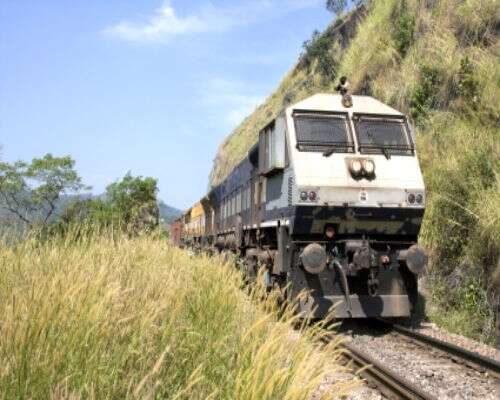
The Union Railways Minister Mr. Pawan Bansal has presented the Railways Budget for the year 2013 to the parliament today. This railway budget, the first one by a congress minister in 17 years received mixed reactions from experts and opposition alike. Expressing profound grief over the loss of lives due to the recent stampede at the Allahabad station, the minster promised a concrete safety plan for the passengers. While the railway minister stressed on the financial sustainability of the Indian Railways currently undergoing a loss of Rs. 225 hundred crores, no increase in passenger fares were announced. However there is a marginal increase in reservation charges, cancellation charges and tatkal fee along with freight charges. A striking difference in this year’s budget compared to the previous few years is the dedicated approach on financial development and passenger amenities compared to populist focus on second class fares witnessed earlier.
Passenger Safety: Showing signs of a well thought out populist budget, passenger safety has been given paramount importance in this year’s railway budget. Stressing on safety for not only the travelers but the general public at large, Mr. Bansal announced a complete elimination of 10,797 unmanned level crossings in the country with no new unmanned crossings in the future. The contentious issue of women’s safety has been addressed by a pan India railway helpline number and deployment of Railway Protection Force (RPF) guards in all long distance trains. Other safety measures include preparation of a complete corporate safety plan for a ten year period and introduction of ladies special trains in metros.
Focus on Track Electrification Program: With the deregulation on bulk diesel prices hurting the revenues of the Indian railway, Mr. Bansal has stressed for the need of focused attention on the neglected track electrification program. The railway minister announced doubling the spending on electrification to Rs. 2,000 crore. With this, the total target for track electrification program is likely to touch 1,800 route kilometers compared to 1,200 route Kilometers in 2012-13.
Passenger Amenities: The railway minister has announced 67 new express trains and 27 new passenger trains. In order to relive the Indian freedom movement for the domestic as well the international traveler, the ministry has announced a dedicated train known as the ‘Azadi Express’ that would link all places linked with the freedom struggle with concessional fares. Apart from the newly introduced trains special air conditioned coaches known as ‘Anubhuti’ will be introduced in selected Shatabdi and Rajdhani trains. The highly criticized hygiene levels in trains would be improved with the introduction of food testing labs and ISO certification for the Railway kitchens. Progressive extension of bio toilets for all trains has been announced extending from the previous budget plan. Mr. Bansal announced provision of free Wi-Fi facilities in selected trains, making Indian railway a modern and technology friendly enterprise.
Next-generation e-ticketing system: The railway minister has announced setting up of a next generation e-ticketing system by the end of 2013 to counter the difficulties passengers face while booking tickets through the IRCTC website. The number of tickets issued per minute though the railway website will be increased to 7,260 tickets per minute from the existing 2,000 tickets per minute. More flexible booking hours have been introduced with online bookings now available from 12:30 am to 11:30 pm. E-ticketing through mobile phones are likely to be introduced soon with SMS alerts for passengers on reservation status. The ministry has also announced the introduction of an advanced fraud control system to improve sale of tickets online. The use of Aadhar database for bookings and validation of passengers to avoid fraudulent and mass booking exodus by various agents and ticket mongers has been announced.
Financial Sustainability: The overall financial sustainability of the railways has been the highpoint of this year’s budget. With no hike was announced in the passenger fares, the minister stressed that freight and passenger fares needed to be based on economic realities. The losses to railways on account of passenger traffic is likely to mount to Rs 24,600 crore in 2012-13 from Rs 22,500 crore in 2011-12. To counter the rising losses and bring a sense of organized financial sustainability the minster has announced raising Rs 1 lakh crore through public-private partnerships and Rs. 1.05 lakh crore through internal resources in the 12th Plan. The minister announced that the Indian Railways hopes to end 2013-14 with a balance of Rs 12,506 crore with an operating ratio of 87.8 per cent from 88.8 per cent in the current fiscal. With the overall freight loading traffic coming down to 100 million tons from 1025 million tons in the past year, the ministry has planned investment of Rs 63,363 crore for 2013-14, including Rs 600 crore from PPP route.
Sops for Employees and Gallantry Awardees: The railway budget brought a smile to the vast majority of the railway employees. The railway ministry has decided to fill the 1.52 lakh vacant positions soon while skill development institutes are planned across the country. Construction of staff quarters for the existing employees would be carried out under the public private partnership module along with health benefits.
Focus on Rail Industrialization: Emphasizing in his speech that the gigantic railway network needs to keep pace with modernization, the railway minister has announced some rail based industries. Prominent among them are a Greenfield Mainline Electrical Multiple Units (MEMU) manufacturing facility at Bhilwara (Rajasthan) in collaboration with the state government and BHEL, a new Forged Wheel Factory at Rae Bareli in collaboration with Rashtriya Ispat Nigam Limited and setting up of Railway Energy Management Company (REMC) to harness potential of solar and wind energy.